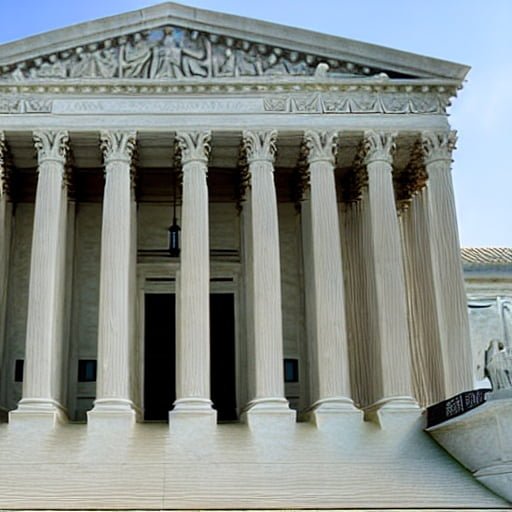In a groundbreaking ruling, the U.S. Supreme Court has determined that the admissions policies of Harvard and the University of North Carolina have violated the equal protection clause of the 14th Amendment. This decision marks a significant departure from decades of established precedent, which had been upheld by narrow court majorities inclusive of Republican-appointed justices. The implications of this ruling are far-reaching, as it could potentially eliminate the ability of colleges and universities, both public and private, to consider race as a factor among many when selecting qualified applicants for admission.
Chief Justice John Roberts, a longstanding critic of any form of racial preferences, authored the majority decision, emphasizing that institutions of higher education must adopt colorblind criteria in their admissions processes. The Court’s majority opinion stated, “Race-based college admissions have been permitted only within the boundaries of strict restrictions: such programs must withstand rigorous scrutiny, avoid racial stereotypes or negativity, and must eventually come to an end.” It concluded that the admissions systems employed by the respondents failed to meet these criteria and therefore violated the Equal Protection Clause of the Fourteenth Amendment.
However, the Court clarified that universities could still consider an applicant’s personal account of how race has impacted their life, as long as it is directly linked to a unique character trait or exceptional ability that the applicant can contribute to the institution. The Court cautioned against institutions prioritizing an individual’s identity solely based on the color of their skin, asserting that the constitutional history of the nation does not tolerate such a choice. Notably, military academies were exempted from the ban on race-conscious admissions due to the potential distinct interests they present.
The rulings in both the UNC and Harvard cases were decided by ideological divisions within the Court, with a 6-3 vote in the UNC case and a 6-2 vote in the Harvard case (with Justice Ketanji Brown Jackson recusing). The majority emphasized that while universities must refrain from using race as a determining factor, there are no restrictions on considering an applicant’s discussion of how race has influenced their life, as long as it is tied to their character or unique abilities.
In dissenting opinions, the liberal justices strongly criticized the majority’s reasoning and its understanding of racial realities in the United States. Justice Sonia Sotomayor argued that the Court’s decision further entrenches racial inequality in education, undermining the constitutional guarantee of equal protection. Justice Ketanji Brown Jackson lamented the majority’s detachment from the country’s actual past and present experiences, asserting that the Court has interfered with the vital work being carried out by institutions of higher learning, such as UNC, to address real-world problems in America.
The impact of these decisions is likely to extend beyond higher education and affect selective primary and secondary schools across the country, including institutions like Boston Latin, Thomas Jefferson High School, and Bronx High School of Science. Moreover, these rulings will likely lead to legal challenges against minority scholarship and fellowship programs and could eventually have broader implications in areas such as employment and other industries. The decisions are anticipated to open a Pandora’s box, triggering a range of legal actions challenging race-conscious programs in various institutions and sectors.
It is noteworthy that the cases in question involved two prestigious institutions, the University of North Carolina as the oldest public university and Harvard as the oldest private university in the United States. The selection of these high-profile schools as legal targets by Edward Blum, an anti-affirmative action activist, was likely motivated by their elite status. UNC only admitted Black undergraduates following a federal court order in 1955. Harvard, on the other hand, became a model for affirmative action programs in 1978 when the Supreme Court cited the institution’s consideration of race as analogous to other factors used to ensure a diverse student body, such as geography, special achievements, or legacy status.
Until these recent rulings, the admissions systems reaffirmed twice by the Supreme Court remained in place not only at Harvard but also at most institutions of higher learning across the country. The court’s conservative majority has now asserted that both public and private colleges and universities are constitutionally prohibited from using race as a consideration in student admissions, citing the Constitution and civil rights laws as grounds for this prohibition.
The Court’s majority aligns with Students For Fair Admissions (SFFA), the organization that sued Harvard and UNC, alleging discrimination against Asian American students with higher SAT and grade scores than any other racial group. At Harvard, for instance, Asian American students constituted 29% of the entering class last year, while SFFA argued that this number should have been higher given that Asians make up only 7.2% of the U.S. population. Harvard countered by explaining that despite having thousands of equally qualified applicants, the number of slots available is limited, with each class typically admitting only around 1,600 students.
